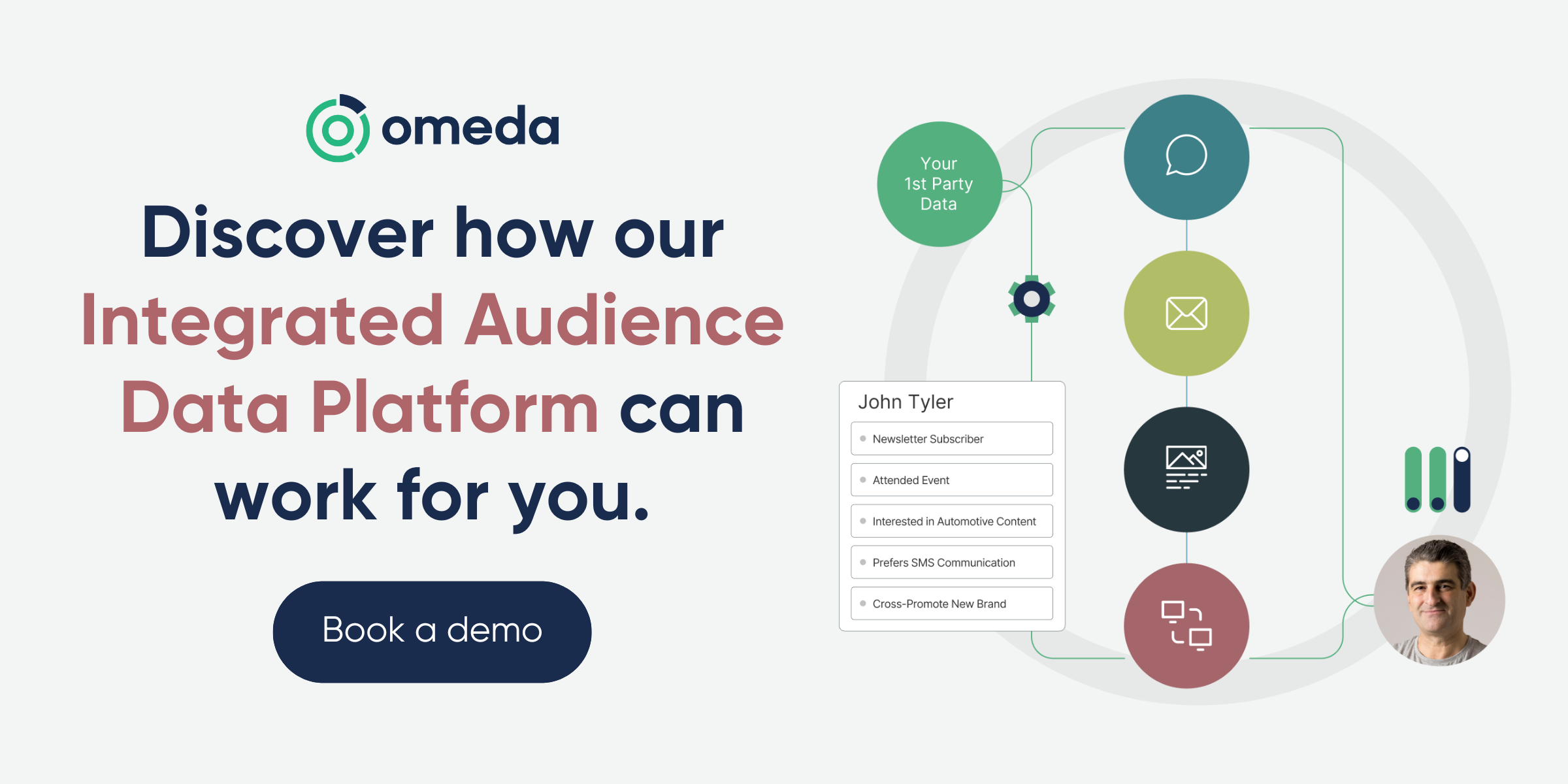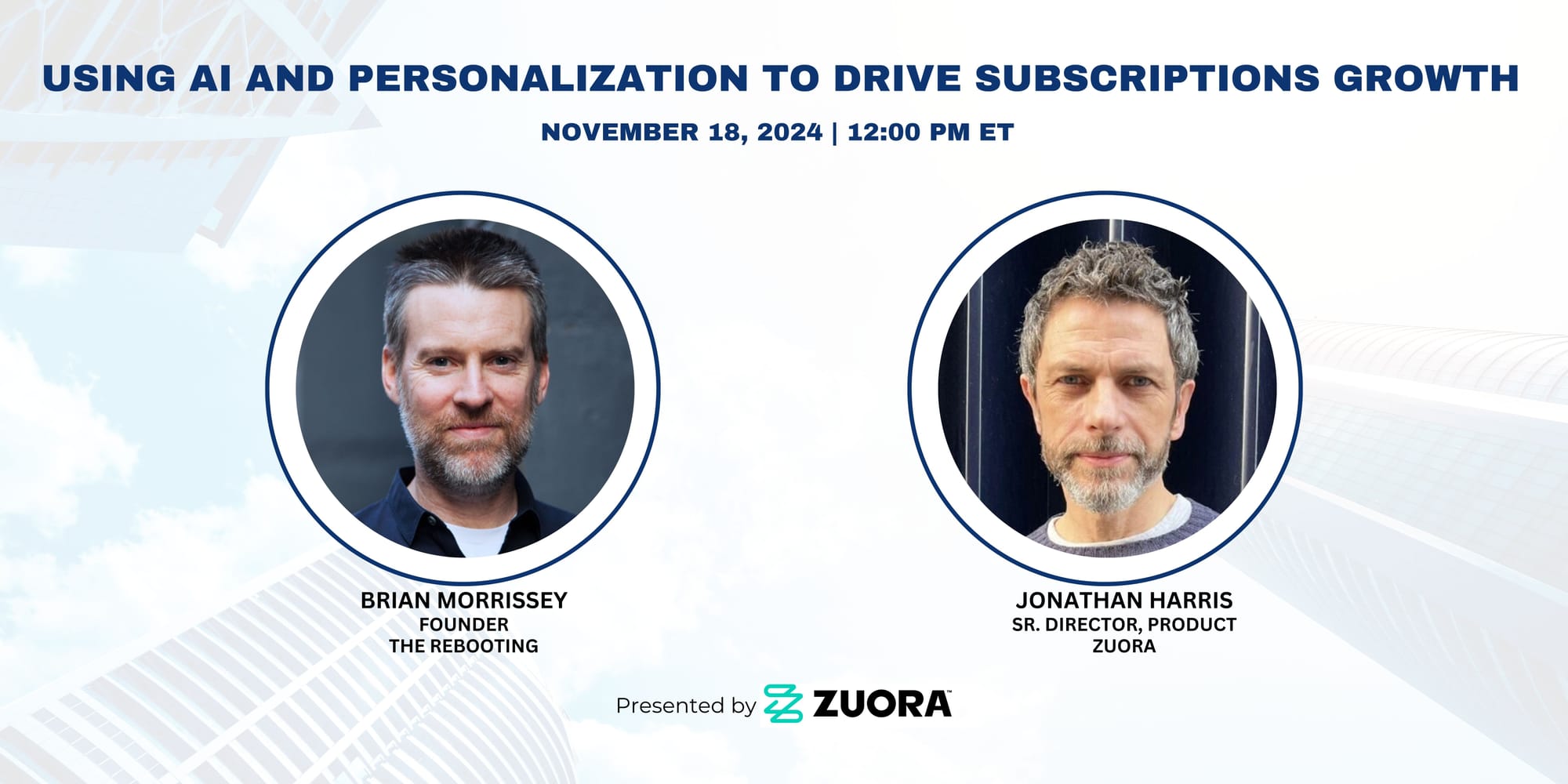UX-monetization tradeoffs
The state of publisher video monetization
Last night at the Tribeca Grill in New York, The Rebooting held its second edition of the New Growth Agenda, gathering 50 top publishing executives to discuss the path forward for publishers. We had a great turnout, with top executives from Bloomberg Media, The Wall Street Journal, Business Insider, The Atlantic, Dotdash Meredith, The New York Post and more. Thanks to LiveIntent and Omeda for partnering on the event. Today:
- In new research, The Rebooting examined how publishers are balancing user experience and monetization in their video advertising approaches.
- AI is coming to paywalls. Join The Rebooting and Zuora on Monday, Nov. 18 at noonET, for an online forum about how personalization can drive more subscription conversions.
- In still more new research, The Rebooting surveyed publishers and found they can’t identify most of their audiences.


Is your audience data scattered across disparate tools? Omeda can help. We combine a CDP, email automation, and subscription management into one tool so you can build, activate and monetize your audience, all from one platform. Book a demo to see how our audience data platform can work for you.

The Rebooting partnered with EX.CO to survey publishers about their video monetization strategies. In particular, we wanted to understand the tradeoffs between a good user experience and maximizing revenue through higher priced video ads.
The report reveals a tension between monetization and user experience in publisher video strategies. While publishers recognize video as a crucial revenue stream, they're still struggling to optimize the user experience, with none rating their video implementation as "excellent" and only 23% as "good."
The reality of publishing is the pressures on the business – no need to list them all at this point – mean that publishers heavily favor revenue over user experience, with 73% prioritizing monetization.
This pragmatic approach stems from survival needs – revenue is essential for continued operations. Publishers have found that audiences show tolerance for less-than-ideal experiences like autoplay and sticky players, with one executive noting they've seen no concerning negative engagement signals.
Publishers remain mindful of past mistakes from the "pivot to video" era, particularly regarding content relevancy. 77% rate contextuality as "important" or "very important," though they're willing to be flexible when necessary to maintain content volume. The key challenge lies in striking a balance between aggressive monetization tactics and maintaining sufficient user satisfaction to prevent audience exodus.

Engaging a divided country
Now that the election is over, will publishers continue to see engagement from the so-called "Trump Bump," or will audiences be more divided over which content resonates versus alienates? While this polarized environment can be challenging, it also offers publishers a unique opportunity to leverage video content to engage audiences who are eager for trustworthy, relevant information. EX.CO’s latest blog post explores how publishers—from news sites to travel and lifestyle brands—can make the most of this period with targeted, balanced video content.

On Monday, November 18, I’ll be joined by Zuora senior director of product Jonathan Harris to discuss the evolution of paywalls to become more personalized. In this conversation, we will focus on the tactics publishers can use to drive sustainable subscriptions growth, including:
- AI-driven experimentation
- Aligning offers and payment terms with customer needs
- Best practices for targeted offers to drive acquisition and retention
- Bundling strategies tied to audience segmentation
- Using predictive analytics to mitigate churn
Join us next week for this interactive discussion. If you cannot make it, registrants will receive a link to a replay of the online forum.

At the New Growth Agenda, a critical point was made by a publishing executive: The ad tech world pushed digital media into a big but cheap market. In the third-party cookie era, publishes were left at a disadvantage, as their audiences were cherry picked and repackaged by a vast array of middlemen. This executive made a tart point: “The ad tech companies aren’t going out of business.”
That’s why the demise of the third-party cookie presents publishers with an opportunity to adopt first-party data strategies that shift the balance of power in their direction.
The Rebooting, in partnership with Permutive, surveyed 38 publishers by to understand the state of their first-party data adoption.
Currently, publishers can identify only 37% of their audiences on average, with over half reporting identity data on less than 25% of their audiences. This limited identification creates monetization challenges, as 70% of publisher inventory is under-monetized due to lack of cookies, while advertisers can only bid on 30% of consumers.
However, successful first-party data implementation shows promising results. Publishers report 30-50% higher eCPMs and over 20% year-over-year growth in audience-driven campaigns. The main obstacle is fragmentation in managing and activating audience signals.
Publishers are adopting multiple solutions to address identity challenges, including curation platforms (16% adoption) and clean room environments. While demand for first-party signals remains strong, publishers face increasing competition from ad-tech companies that repackage publisher signals.
Thanks for reading. Send me a note with your feedback by hitting reply.



